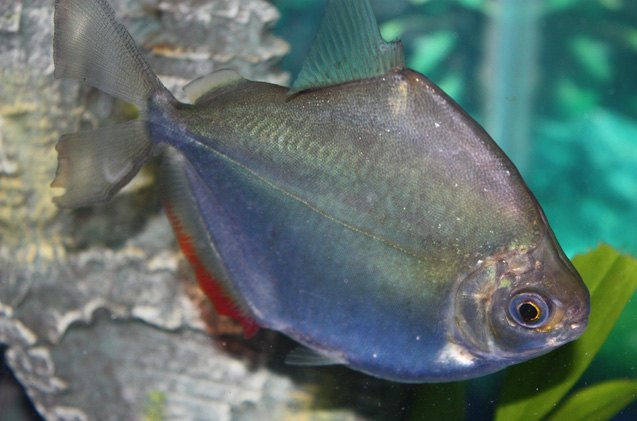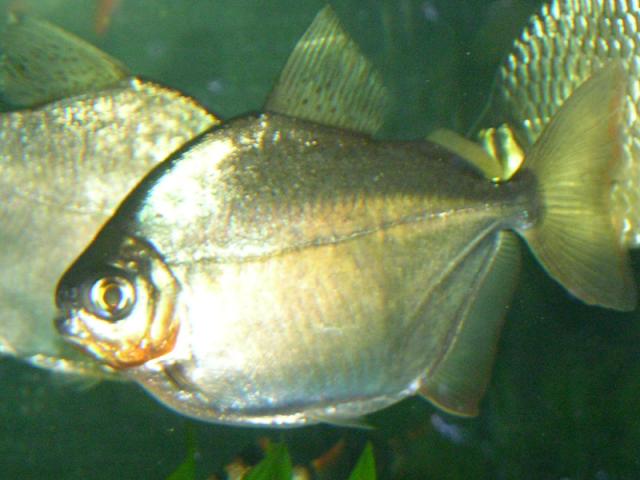
General description
The silver dollar is an extremely popular species of freshwater fish. They get their name from their almost round shaped bodies and silver coloring. Silver dollars are closely related to piranhas and pacu, but are gentle vegetarians. Their hardy nature and easy going temperament make them an excellent choice for most community aquariums and beginner aquarists.
Silver dollars are an extremely popular species of freshwater fish.
Origins
Silver dollars originate from the Amazon River in South America.
Color
The silver dollar’s scale-less bodies are silver colored.
Maintenance and care

While silver dollars do not grow as large as pacus, they can grow up to 10 inches in length in the aquarium. They are also active swimmers and should thus be kept in large aquariums. They also do best when kept in shoals of 6 fish or more. The silver dollar’s aquarium should be dimly lit with plenty of driftwood and caves for the fish to hide in. It is often hard to introduce aquarium plants to the silver dollar aquarium as they are voracious plant eaters and often destroy any live plants.
Silver dollars are extremely peaceful in nature but are known to sometimes eat tinier species of fish that fit easily in their mouths. They can however be kept easily in most community aquariums with medium to large sized, peaceful tank mates.
Silver dollars are also known to sometimes jump out of aquariums. Care should be taken to cover the silver dollar’s aquarium with a heavy, tight-fitting lid. They are relatively heavy eaters and their aquariums should therefore be very well filtered. It is also recommended that partial water changes be carried out sporadically.
Feeding
Like most large, omnivores, silver dollars require a fair amount of variety in their diet. They are mainly vegetarians and can be fed on vegetable matter such as algae wafers, spinach, romaine lettuce, peas, green beans, squash and wilted greens. Their diet can also be supplemented with live or frozen foods such as brine shrimp, grindal worms and freeze-dried bloodworms. They will also readily accept most flake and pellet based foods.
Their hardy nature and easy going temperament make them an excellent choice for most community aquariums and beginner aquarists.
Breeding
Silver dollars do not display sexual dimorphism. The best way to establish a breeding pair is to raise a large number of juveniles and let them pair out by themselves. Silver dollars can be enticed to spawn by reducing the water hardness and increasing the aquarium temperature. The spawning tank should also be heavily planted with fine-leaved plants.
Aquarium varieties
Silver Dollar, Striped Silver Dollar, Spotted Silver Dollar, Red-spot Silver Dollar, Speckled Silver Dollar, etc.
Photo credit: Kandy Vela/Flickr; Derek Ramsey/Wikimedia















